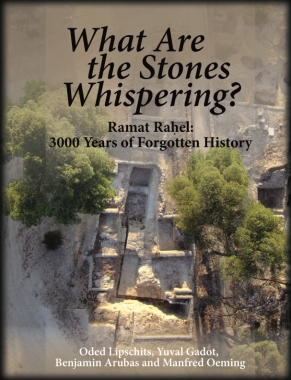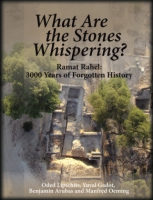
What Are the Stones Whispering?
Ramat Raḥel: 3,000 Years of Forgotten History
Edited by Oded Lipschits, Yuval Gadot, Benjamin Arubas, Manfred Oeming, Efrat Bocher, Boaz Gross, Uri Davidovich, Itamar Taxel, Ran Morin, Roi Porat, Dvori Namdar, Yoav Farhi, Nirit Kedem, and Keren Ras
What Are the Stones Whispering?
Ramat Raḥel: 3,000 Years of Forgotten History
Edited by Oded Lipschits, Yuval Gadot, Benjamin Arubas, Manfred Oeming, Efrat Bocher, Boaz Gross, Uri Davidovich, Itamar Taxel, Ran Morin, Roi Porat, Dvori Namdar, Yoav Farhi, Nirit Kedem, and Keren Ras
“[Archaeology] books appeal to a broader audience, who can enjoy both the more summarized results and the illustrations and photos, which are of high quality. At the same time, the information can also be used by scholars, who can often find this information in these semipopular volumes easily. The current volume hits all of these checkboxes.”
- Description
- Reviews
- Table of Contents
“[Archaeology] books appeal to a broader audience, who can enjoy both the more summarized results and the illustrations and photos, which are of high quality. At the same time, the information can also be used by scholars, who can often find this information in these semipopular volumes easily. The current volume hits all of these checkboxes.”
Preface
Introduction
Ramat Raḥel—Excavation Staff 2005–2010
Section One: Introductory Chapters
Chapter One: Strategic Location, Natural Surroundings and Processes in Site Formation
Chapter Two: The Question of the Site's Ancient Name
Chapter Three: History of Research
Section Two: Government and Administrative Center—Late Iron Age to the Early Hellenistic Period
Chapter Four: Historical Introduction to the First Building Phase—Judah under Assyrian Rule
Chapter Five: First Building Phase (Late 8th / Early 7th Century BCE)
Chapter Six: Historical Introduction to the Second Building Phase—Judah under Egyptian and Babylonian Rule
Chapter Seven: Second Building Phase (Late 7th Century BCE)
Chapter Eight: Historical Introduction to the Third Building Phase—Judah under Persian Rule
Chapter Nine: Third Building Phase (Late 6th or 5th Century BCE)
Chapter Ten: Destruction and Oblivescence of the Administrative Center in Ramat Raḥel
Section Three: From Government Center to Jewish Village—Ramat Raḥel between the Hasmonean Period and the First Jewish–Roman War
Chapter Eleven: Fourth Building Phase—The Hasmonean and Early Roman Periods
Section Four: The Rural Settlement—Roman, Byzantine and Umayyad Periods to the Days of Kibbutz Ramat Raḥel
Chapter Twelve: Fifth Building Phase—Late Roman and Byzantine Period Settlements
Chapter Thirteen: Abbasid to Ottoman Periods (660–1517 CE) (Itamar Taxel)
Chapter Fourteen: Coins and Hoards (Yoav Farhi)
Chapter Fifteen: Subterranean Space Survey in the Southern Ramat Raḥel Hilltop (Uri Davidovich and Roi Porat)
Chapter Sixteen: "Landscape Archaeology" in the Western Slopes or Ramat Raḥel (Uri Davidovich)
Chapter Seventeen: Modern Period—the Story of Kibbutz Ramat Raḥel (Efrat Bocher)
Conclusion: The Ramat Raḥel Excavations, and a Few Thoughts about the Significance of Archaeology for Understanding the History of Judah
Endnotes
Bibliography
List of Figures
Mailing List
Subscribe to our mailing list and be notified about new titles, journals and catalogs.



